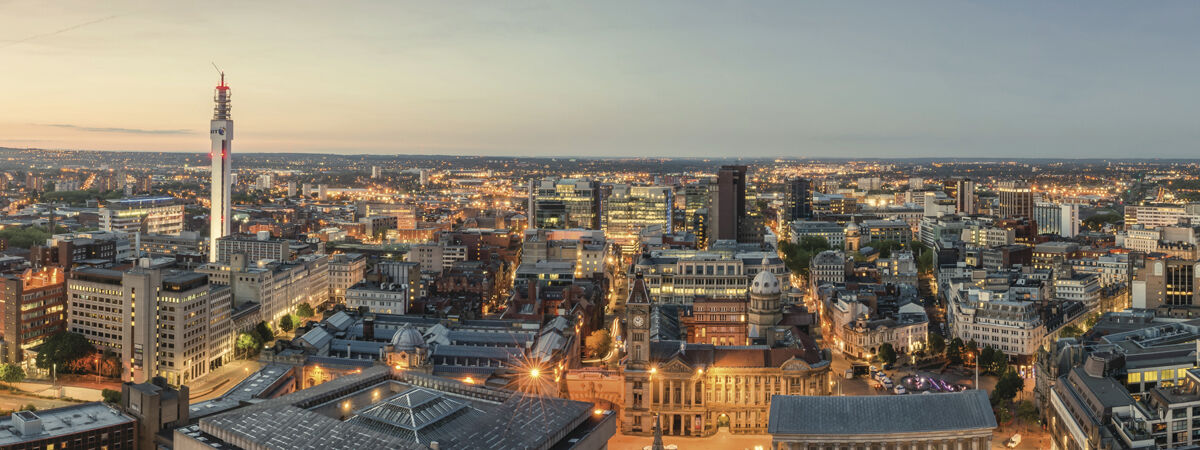Why you should study Architecture in Birmingham
Our architecture courses are validated by the Royal Institute of British Architects (RIBA), ensuring you’ll receive the highest quality teaching, facilities and opportunities when studying with us. But other than this, why would you choose Birmingham of all places to study architecture? Read on to find out.
Beautiful buildings and architectural history
The Birmingham skyline is a mixture of historic Venetian and neo-Gothic architecture accompanied by modern glass skyscrapers. Walking around the city centre is an interesting and educational endeavour, as the fusion of architectural styles is eye-pleasing and unique.
There are plenty of developments in the works too, such as The Octagon, a 49-storey skyscraper scheduled for completion in 2025 – this will be Birmingham’s tallest building once complete. Exchange Square and Cortland Broad Street developments are also both over 100 metres tall, filling out the city skyline even further. Other than this, an enormous redevelopment of Digbeth is planned, with 59 buildings set to be demolished to make way for a complete restructuring of the area.
You’re going to want to be in the middle of the city’s evolution!
Unique initiatives and opportunities
Here at BCU, we are home to plenty of opportunities and chances to develop your skills further, which is why we work with and create a wide range of resources for our students to take advantage of.
SuperStudio is a space that gives architecture and design students the opportunity to learn or work on specific skills, hear from key speakers, and meet companies. It has proudly featured guest speakers such as Glenn Howells, CJ Lim, Tom Osbourne of Knights Architects, Scott Dyde, and many more. As well as talks, guests also hold workshops allowing you to develop your skills further, from ceramics design, to plaster modelling, and digital skills such as Photoshop. SuperStudio runs every Wednesday.
Collaborative Laboratory (Co.LAB) is an award-winning initiative. The programme is a combination of undergraduate and postgraduate students from across all architecture and design courses, which encourages collaborative and peer-to-peer learning. Within the initiative, you will have the chance to participate in a project ran by both academics and external clients and is largely based off-site so to develop your professional and transferrable skills even more.
These are just some of our beneficial opportunities, you can see more of them here.
Second City
Birmingham is the UK’s second biggest city (we don’t like to shout about it at all…), meaning we have a wealth of opportunities, activities, and projects to take advantage of. There are plenty of museums, parks, bars, restaurants, and music venues to get inspiration from or simply wind down in. Being a large city, Birmingham is often chosen to host important events such as the Building Information Modelling (BIM) conference, and has even been held at BCU in past years.
Birmingham hosted the Commonwealth Games in 2022, and whilst not directly related to architecture, the event contributed a wealth of opportunity and economic growth for the city that has lasted long after it has taken place. It has brought benefits like cultural engagement, tourism and increased business. Being in the heart of it will only strengthen your employability and knowledge as the city continues to grow and thrive.
State-of-the-art facilities, on and off campus
Our architecture courses are based at the £62 million Parkside building, which houses extensive workshop and studio space accompanied by cutting-edge equipment. We are also home to digi.lab, where you can experiment with laser cutting, 3D printing, and more – this will prepare you to work with larger industry equipment.
Our off-campus workspaces include the likes of Nest Gallery, which is based within Glenn Howells Architects in Digbeth. Other than this, the city itself is a space for our students to get hands on with projects. During their course, past students have worked on projects such as the £600 million redevelopment of New Street Station, as well as on our very own Curzon Building on our city-centre campus.
